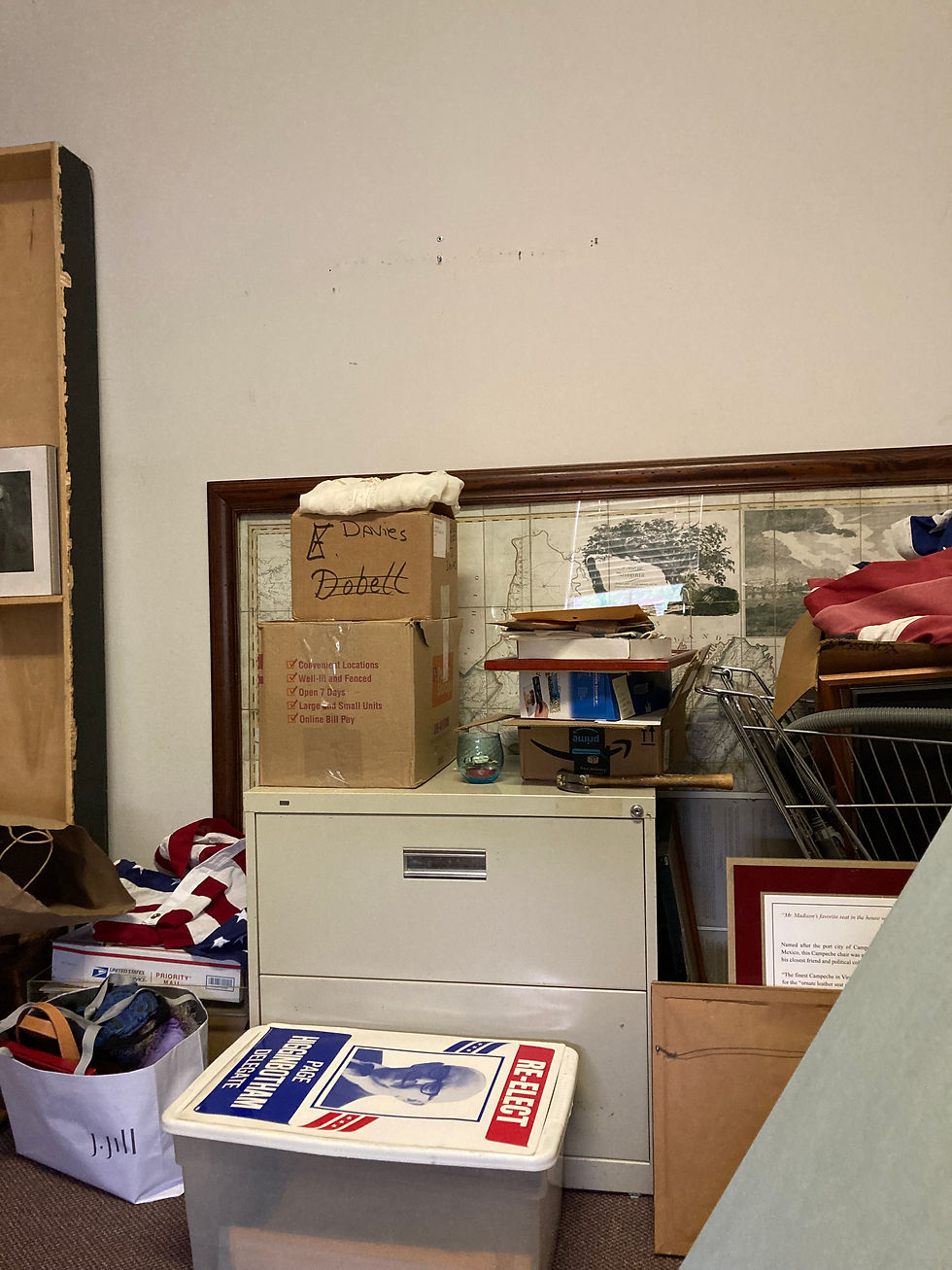A day in the life....
- B. Sullivan
- May 13, 2022
- 3 min read
One would think that running a small-town museum would not be too challenging, after all, you are in a rural area, right? Well, it is both challenging and fulfilling.
The fulfilling part is multi-faceted. I enjoy researching artifacts, learning the stories, and planning exhibits. My goal is creating an exhibit that hopefully provides good information alongside a pleasing presentation. It takes time to research artifacts because I want to learn more than "what" it is; I want to know its history. Who created it? When and how was it used? Is it still used today? Did it inspire later innovations? What is its local story? I save all information in the museum's software program (PastPerfect) for both information and use in exhibits. One of my favorite activities is placing Victorian clothing on dress forms for

textile/fashion exhibits. Compared to more modern clothes, the older fabrics are of a high quality, the garments very well-constructed, and many have elegant embellishments. They are usually eye-catching and are conversation pieces.
While I don't write as much as I would like, I do enjoy researching and writing "From the Collection" for "The Orange County Review" and sharing on LinkedIn and this blog page. The problem is finding dedicated time during the day for research, photographs and layout because I need to attend to our guests/visitors when they enter the museum.
I enjoy our visitors, learning where they are from and sharing the museum's exhibits with them. It is especially encouraging when visitors, young or not so young, are really engaged and enjoying themselves.
The not so much fun part of my day is cleaning the bathrooms after each use, vacuuming, wiping case glass and shelving, and doing garbage patrol. The gift shop shelving gets dusty rather quickly and people do track in outside debris on their shoes, so dusting and vacuuming are daily tasks; as is wiping down bathrooms. While the upper museum rooms are not difficult to maintain, the lower level Hall of Agriculture and Transportation is a real challenge.

It is such a large space filled with farm implements, conveyances, and of course, the 1733 house. It takes a couple of hours to vacuum the floor space and behind the artifacts. A couple more hours are needed to clean (vacuum/wipe) artifacts and the house interior. What does not help is the small areas under doors and alongside a few windows where there is open space and dirt and debris come filtering into the space. (Hint-hint -- if you want to volunteer some hours, I could really use help!)

Since I don't have a staff of people working with me, it is easy to get caught mid-project when guests/visitors arrive and I sometimes; no, I often get side-tracked mid-project and don't get back to the work until late in the day or even the next one. (I started this short blog yesterday!)
When I'm really busy with guests (phones, etc.), I often have my to-do-stacks. After little while, things begin to pileup. It doesn't help that our storage space is finite and I'm not certain how I can increase the efficiency of the current area. So -- as you can see....things are building up!

Occasionally I will have a surprise visit from a local resident wanting to donate something. This is always interesting and especially fun if I am able to accept the donation(s). Working in a locally-focused museum is especially fun when you receive another piece of the local heritage. All kinds of things have been donated in the last few years: quilt, surgical equipment, garments, books, an oven and just yesterday a cobbler shoe/boot last. I was also able to find the patent through the U.S. Patent search engine.

The donor's ancestor was not the patent holder, rather, he used the item. It was passed down through several generations.
Each item has a story, and it is these little bits and pieces that make history more interesting.
The basic plan for each day is to vacuum, dust, and check bathrooms' supplies and cleanliness. Then, if there is time, dust the gift shop and set up for the day. Once open at 10:00 a.m., visitors/guests are my primary focus. If it is a slower day, then I can work on various projects, respond to any queries (emails usually), and write something for one or several posts/sources. An on-going project is photographing the entire collection and ensuring the photograph and all information is up-to-date in PastPerfect. I'm also working re-boxing and improving storage of artifacts as best as can be done in this limited space.
I am grateful for my one high school intern who comes approximately every-other-Saturday - Yancy. She's great! I'm hoping she'll be able to make more Tik Tok videos for the museum. She has been helping with the inventory work and it's been a real relief to have her assistance.
SO - that's what it's like, almost every day, working in a small town museum....usually.
